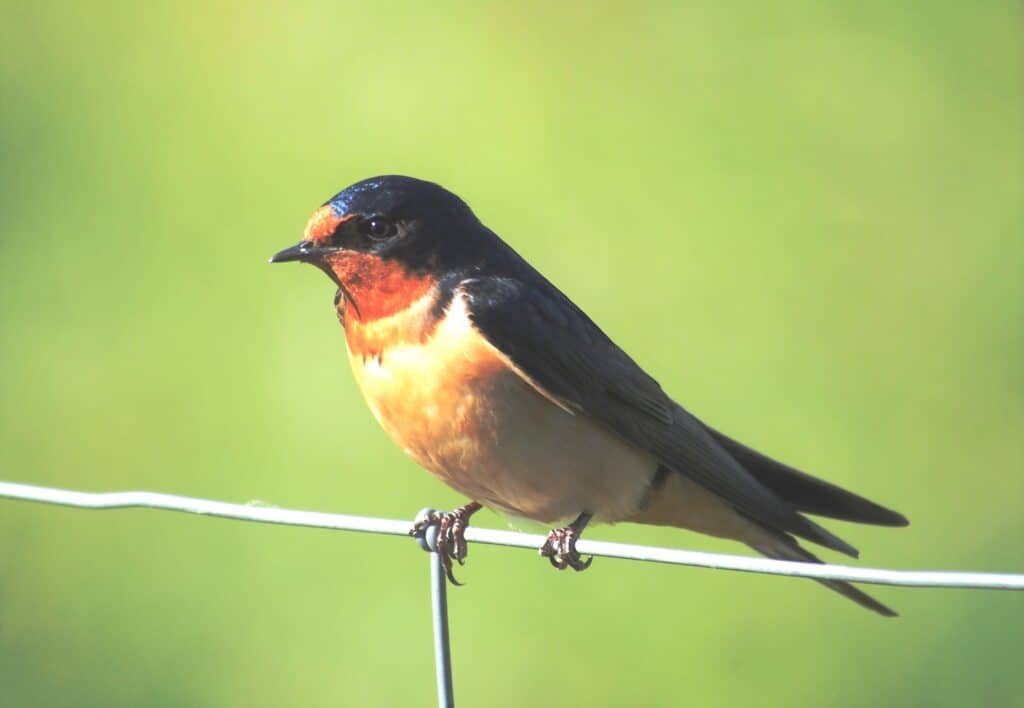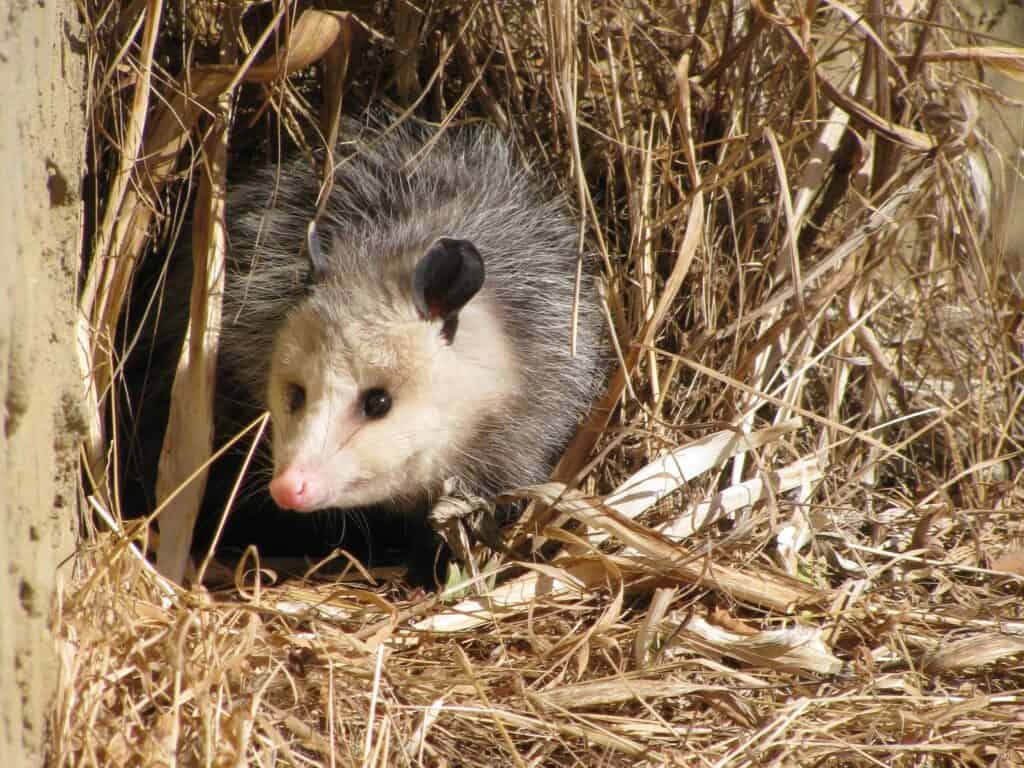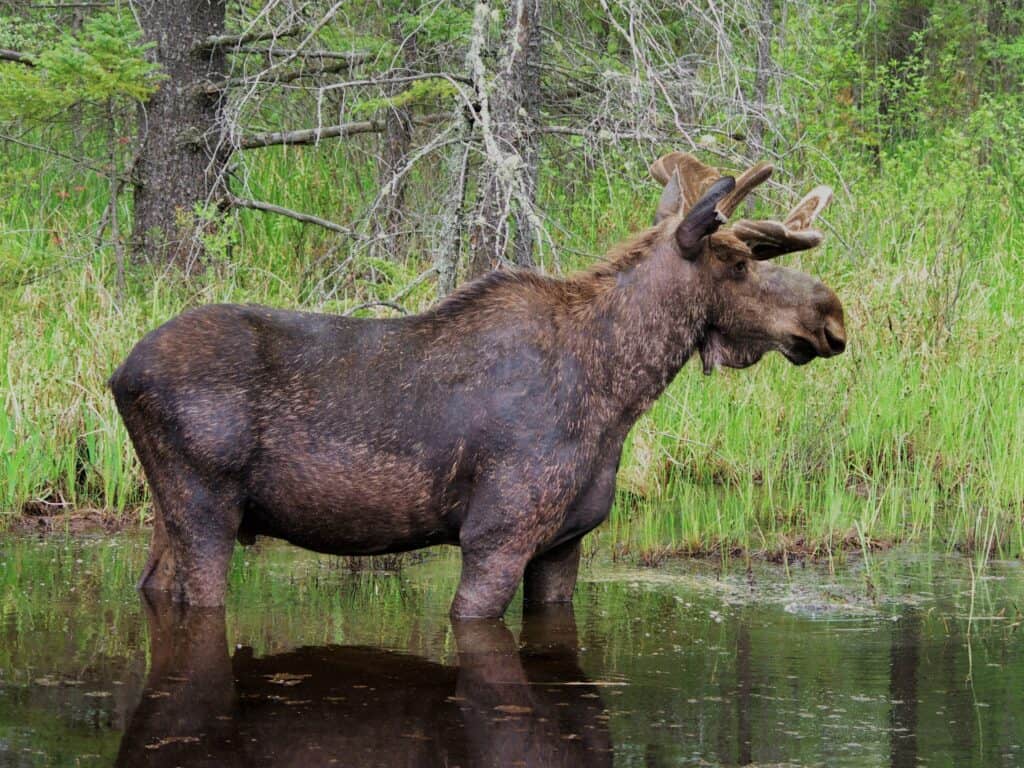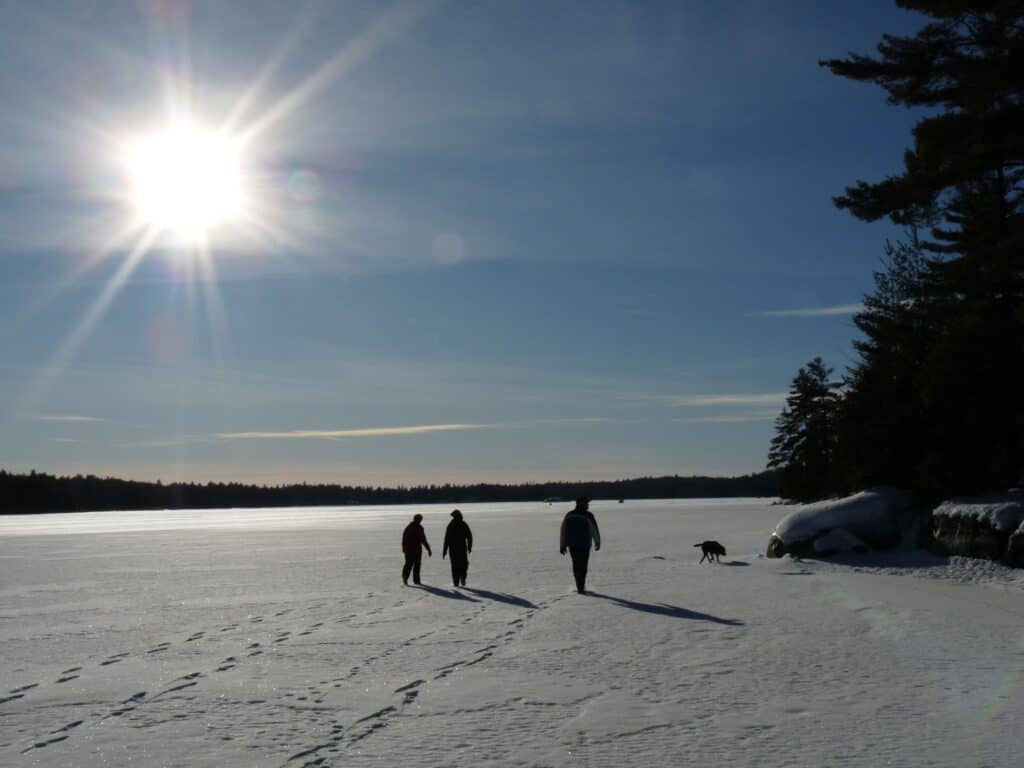Recently, I was asked to reflect on how nature in the Kawarthas has changed since I was a child and young adult in the 1960s and 70s. Thinking back, what immediately comes to mind is how much more abundant so many species were. In my mind’s eye, I see the swarm of barn swallows nesting in the boat house at my grandparents’ cottage, the big purple martin colony at the Kawartha Park Marina, and numerous bats coursing over the lake in the evening. I remember how the windshield of our car was covered by the grimy remains of insects in summer, how throngs of June bugs would blanket sidewalks and spin around on their backs, and how an evening walk down George Street was accompanied by the calls of numerous nighthawks.

I don’t recall ever thinking about the climate. It was entirely predictable over the four seasons and taken for granted. Snow came in mid-December and stayed until late March. We might see a January thaw, but skiing and outdoor skating conditions were generally good for the entire season. The arrival of spring was a gradual process, summer heat was rarely oppressive, and cool fall weather consistently arrived in September with the first frosts. Extreme weather events were rare.
Fast-forward to 2021
If the teenager I was in 1970 could have travelled in time to 2021 and see how the natural world has changed, what would stand out? First, he would be astounded by how much warmer and unpredictable the climate has become. As a skier, the mild and often rainy winters would deeply sadden him. He would often find the summer heat onerous and be surprised by the number of extreme weather events. This time-traveler would wonder why so many birds that depend on flying insects have plummeted in number, and ask, “where are the multitudes of swallows, swifts, and nighthawks?” He would also remark on how much quieter spring’s dawn chorus of bird song has become. However, he would be astounded to see new species that have arrived from southern Ontario like Virginia opossums, red-bellied woodpeckers, and giant swallowtail butterflies as well as a host of invasive plants and animals from Eurasia like Phragmites, dog-strangling vine, and zebra mussels.

His astonishment wouldn’t stop there. He would hear frogs calling and see plants blooming much earlier in the spring. He would wonder why Canada jays are no longer in the Petroglyphs and be surprised that the habitat and climate conditions they depend upon have shifted northward. He would be shocked that moose are suffering from heat stress and diseases like brainworm and winter tick (Dermacentor albipictus) infestations. He’d also be appalled by the degraded state of many forests as a host of tree species struggle to survive in the face of drought, invasive species, fungal diseases, and intense wind and freezing-rain storms.
My former self would also find some encouragement, however. Generalist species like blue jays, cardinals, white-tailed deer, raccoons, and coyotes would seem more common than ever. He’d no doubt be impressed by the numbers of large birds in general, including everything from bald eagles and merlins to sandhill cranes, wild turkeys, and trumpeter swans. In fact, he probably would never have seen any of these in 1970.

Climatic changes
Let’s step out of this exercise in time-travel and look at what 21st century climate science is telling us. Carbon dioxide levels in the atmosphere are now at 415 parts per million (ppm) as compared to 320 ppm in 1970. Fifty percent of this CO2 has been added in just the past 30 years. 350 ppm is considered the maximum safe concentration. 2020 tied with 2016 as the warmest year globally since records have been kept. Emissions are still rising at about 1.5 percent a year, and we are on course to at least 3 C of warming by the end of the century. The Intergovernmental Panel of Climate Change (IPCC) warned humanity in October 2018 that warming must be kept to well below 2 C to avoid the worst climatic impacts.
Canada is warming at twice the global average, and the Arctic is warming three times faster. In just the past 10 years, warmer-than-average months in Peterborough have outnumbered cooler-than-average months by a ratio of two-to-one. In 2020, eight of the 12 months were warmer than the 1971-2000 average. Five months – January, March, July, November, and December- were at least 3 C warmer. So far, January 2021 has been a shocking 6 C milder than usual.
In 2018, Peterborough contracted ICLEI Canada to prepare a climate forecast for the city. The findings are sobering. In a “business as usual” emissions scenario, it is expected that Peterborough will be about 2 C warmer in each season by just 2030 and nearly 5 C warmer by 2060. Annual precipitation is expected to increase with winter and spring becoming significantly wetter. Precipitation events in general are projected to become more intense with more 100-year storms. Summers, however, will likely become drier with increased fire risk. Maximum surface temperature in our lakes will rise from a baseline of 23.9 C in the past to 25.6 C in the 2020s and 27.1 C in the 2050s. Projected warming, particularly in winter months, will mean less ice cover. This will translate into greater water loss through evaporation and therefore lower water levels. The impact on freshwater ecosystems will be enormous. In brief, the climate of the Kawarthas is on course to become like that of southern Pennsylvania today.

What can you do?
The changes we are seeing in the natural world represent a “canary in the coal mine” warning that climate change is happening now. But, like the proverbial frog in water that is slowly brought to a boil, many people are not yet sufficiently aware of the danger. Unlike a threat like COVID-19, humans struggle to notice and respond to slow motion change. One of the most important individual actions we can take to heighten awareness is to make climate change a regular topic of conversation with friends and family. Focus on the values you share together, your concerns for your family’s future, and the importance of collective solutions such as new laws, regulations, and treaties. Point out, however, the many reasons for hope such as promising new climate policies from a host of corporations, financial institutions, and politicians like Joe Biden, Justin Trudeau, and the leaders of the European Union. Remind people that new technologies like green energy and electric vehicles are advancing like never before. Finally, mention the fact that much is happening locally, thanks to organizations and initiatives like Sustainable Peterborough, For Our Grandchildren, Peterborough Alliance for Climate Action, Random Acts of Green, Peterborough GreenUp, Camp Kawartha, the Endeavour Centre, Transition Town Peterborough, Youth Leadership in Sustainability, and Peterborough Youth Empowerment.
Although it’s important to set an example where you can – diet, transportation, choice of consumer goods, and the value you place on nature – it’s even more important to push for collective action. This means voting for politicians who take climate seriously, supporting science, signing petitions, writing letters, and phoning elected officials. You should also consider joining or donating to a group demanding more and quicker action, be it in the area of equality issues, poverty, conservation, or green energy. Finally, it’s essential to have a vision of what we’re fighting for: a society fueled by renewable energy where everyone and every species thrives deep into the future.